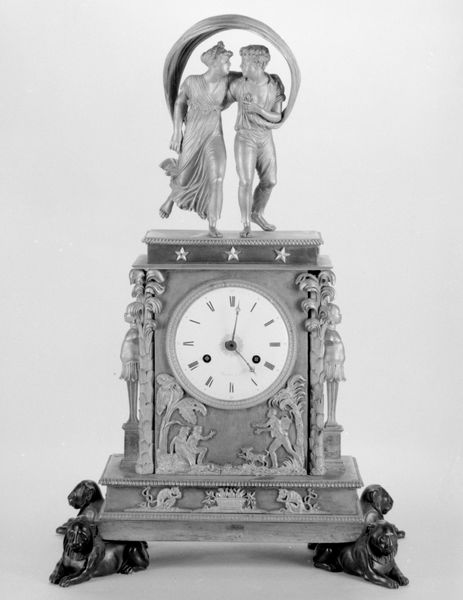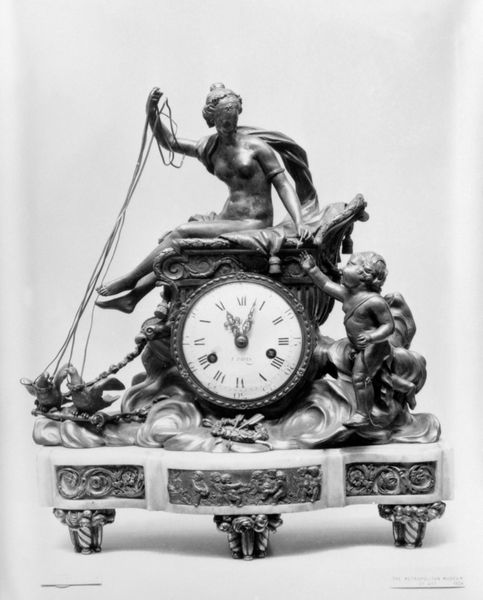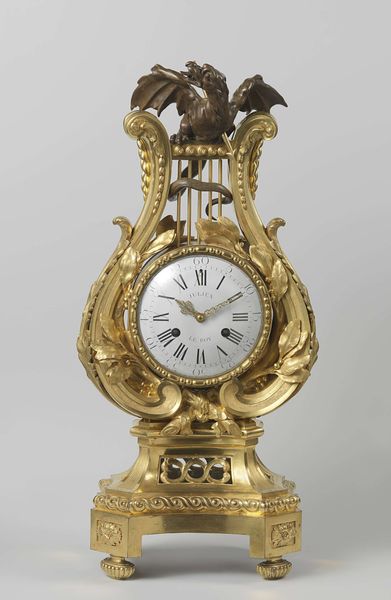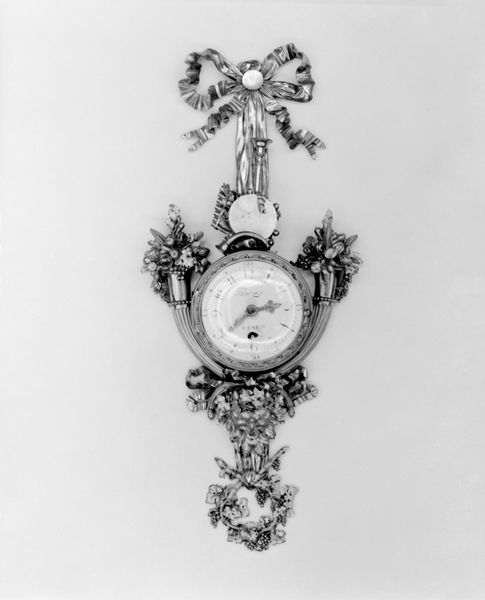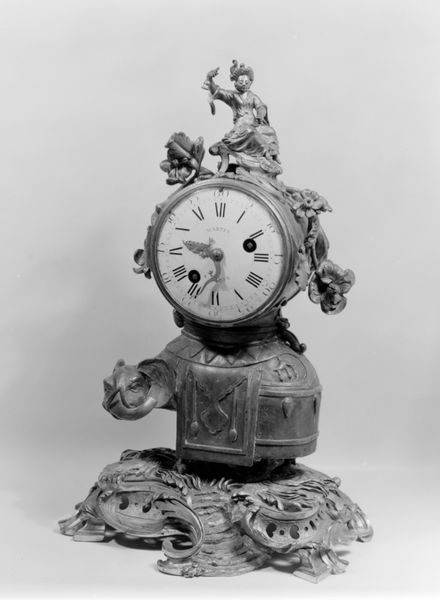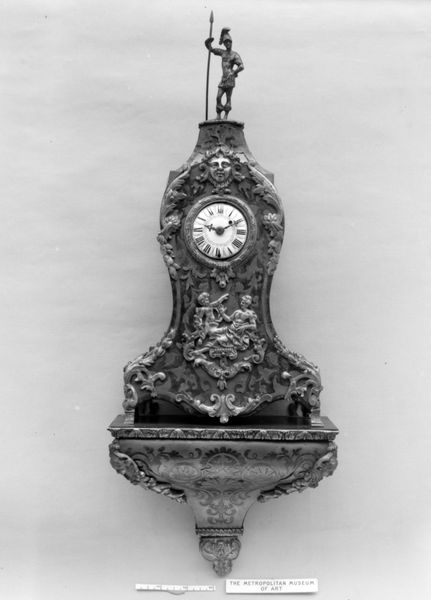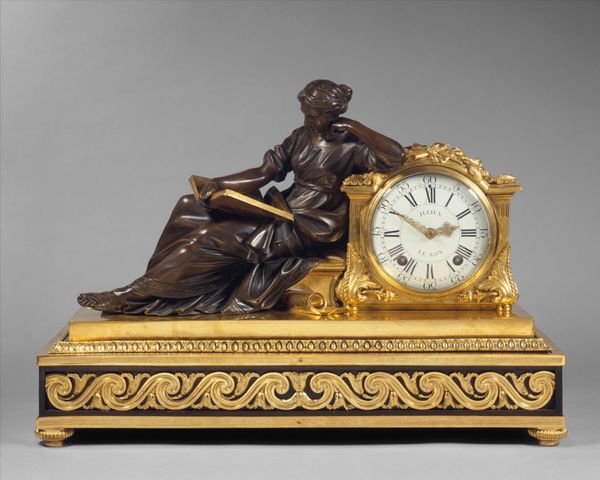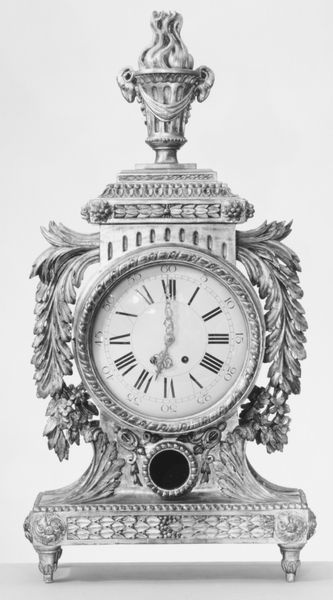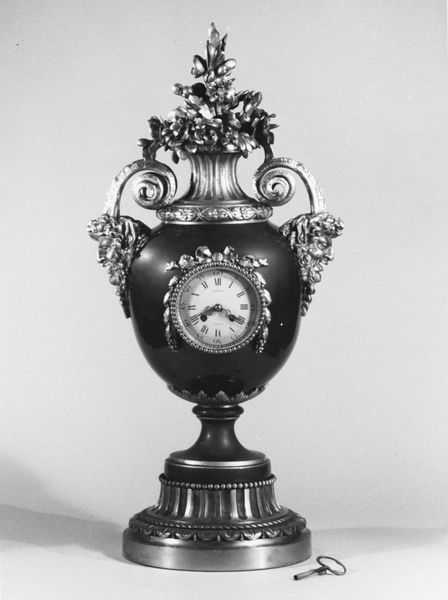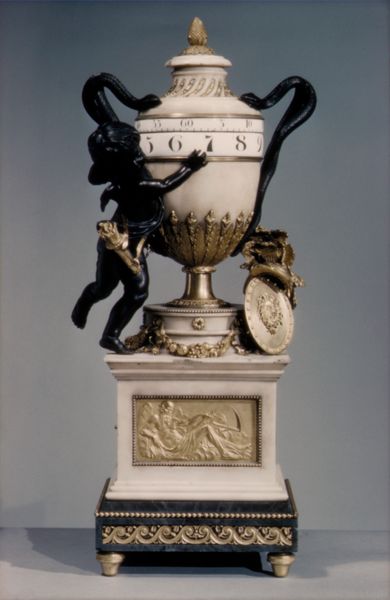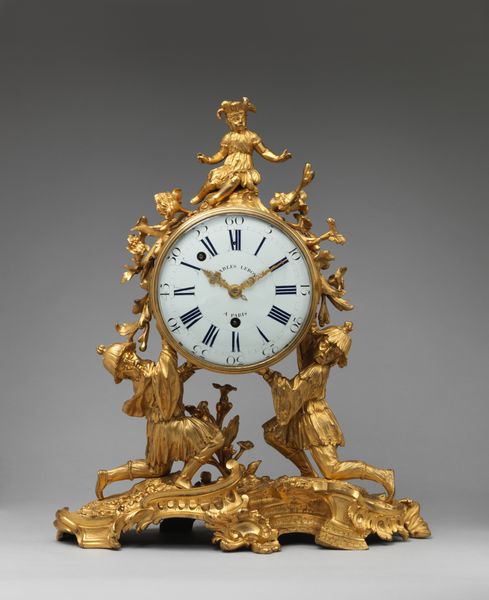
metal, sculpture
#
portrait
#
neoclacissism
#
metal
#
sculpture
#
classical-realism
#
figuration
#
sculpture
#
decorative-art
Dimensions: Overall: 29 1/4 × 17 1/2 × 9 3/4 in. (74.3 × 44.5 × 24.8 cm)
Copyright: Public Domain
Curator: Here we have a clock, dating from approximately 1760 to 1770. Editor: Oh, my! The sculpture is striking—a rather imposing object. Are those bronze figures flanking the clock face? They seem to convey a solemn and pensive mood. Curator: Indeed. The object features gilded and patinated bronze, crafted during the Neoclassical period. You’ll note how the metalwork embodies the clean lines and idealized forms characteristic of this movement. The allegorical figures offer visual and intellectual interest—they engage the symbolic vocabulary of that period. Editor: The figures do add a sense of gravitas. However, how would this object have functioned within the broader cultural landscape of its time? I am curious as to whether this clock served solely as a time-telling device or if it fulfilled a more symbolic role? The lion heads around the base suggests status. Curator: I think your suspicion of symbolic meaning is valid, given how timepieces are very potent expressions of modernity, commerce and industry, but this decorative object has some complex layering that exceeds simple utilitarianism. Clocks had gained popularity among the elite, but its purpose transcends mere time-telling; such objects showcase technical prowess and the sophistication of its owner. Notice the ornamental details that further reinforce its luxurious character. Editor: Certainly, the precision evident in the rendering of the metalwork does hint at technological advancement, which is very important. So much complexity of surface. Now, would you agree that there seems to be tension between its function as a device for measuring time, on the one hand, and its overt emphasis on aesthetic qualities, on the other? It looks frozen in the ancient past even though the tech inside moves forward... Curator: It's a tension which the piece deliberately showcases through allegorical representation. These weren’t mere time-telling devices but declarations of cultural literacy. That marriage of technological progression and decorative ambition mirrors the contradictions of its own era. Editor: That's really quite a profound thought. I had only noticed how striking the sculpture appeared at first, but understanding its intricate fusion of history, technique, and status elevates the piece. Curator: Yes. The fusion between utility and beauty. Hopefully, now you also have a greater appreciation for its symbolic weight and historical importance, not merely its obvious surface decoration.
Comments
No comments
Be the first to comment and join the conversation on the ultimate creative platform.
